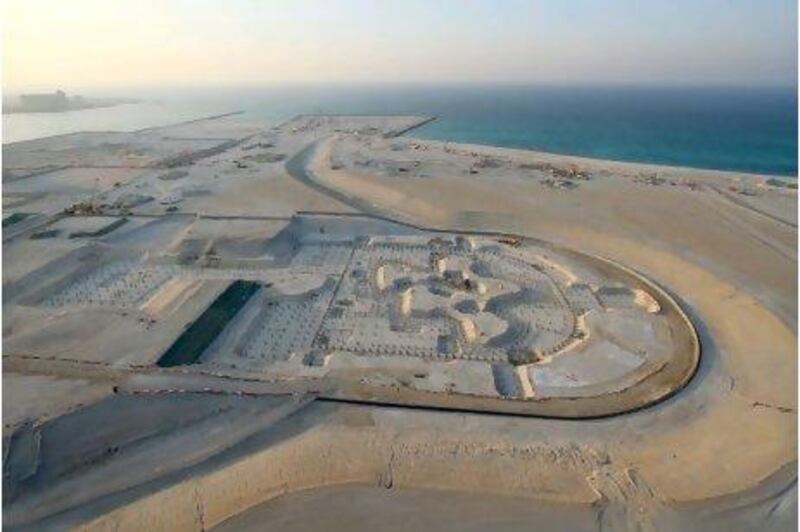With the unveiling of the futuristic design of the Zayed National Museum, the mostly barren Saadiyat Island is gradually taking shape as a project intended to play a critical role in Abu Dhabi's transformation from an oil-based economy.
"Today we have the oil," said Mohammad Ahmad al Bowardi, the Secretary General of the Abu Dhabi Executive Council. "Tomorrow we will not have the oil. We will have the mind of the people that will create alternatives … to ensure that the United Arab Emirates will continue to contribute to the world development."
The 27 sq km natural island is to become Abu Dhabi's cultural centre and play an important part in the emirate's economic vision. With branches of the Louvre and Guggenheim museums planned alongside the Zayed National Museum, the three institutions are expected to attract 1.5 million visitors a year. But the developers emphasise that the museums are not planned only as economic boosters for the capital.
"There are definitely economic benefits for these institutions," said Mubarak al Muhairi, the managing director of Abu Dhabi's Tourism Development and Investment Company (TDIC), which is the master developer of Saadiyat Island.
"The story has changed. If I talked to one of the directors now of these museums, they would tell you 30, 40 years ago it was a shame to say we are building a civic centre or a museum that can benefit commercially or economically. But now that has changed to 'if it doesn't really benefit the economy, it is difficult to sustain'.
"The reason behind it is not really the economic benefits. It's more the learning and the benefits of bringing knowledge to the younger generation. The decision makers never started looking at this. It was always how the thinking, the creativity will evolve. I think those are the real returns on investment."
But the tourism benefits are certainly vital to Abu Dhabi's economy as it diversifies beyond its dependence on oil. The emirate is aiming to attract 2.3 million hotel guests by 2012, up from 1.54 million last year and an expected 1.65 million guests this year. Other developments in the capital - such as Yas Island with the Yas Marina Circuit and Ferrari World theme park, as well as the flood of branded luxury hotels coming on to the market - are part of the strategy of putting Abu Dhabi on the international tourism map.
"For sure, tourism and other sectors will benefit from having such institutions in Abu Dhabi," Mr al Muhairi said.
Lord Foster of Foster and Partners has designed the Zayed National Museum, which is named in honour of Sheikh Zayed, the founding President of the UAE.
"All the great museums, which certainly do today around the world attract visitors and generate conversations about tourism, they never started off with the idea of being a tourism venue," Lord Foster said. "They were for their own sake. They were to celebrate a heritage and because they did it well they then became places that people wanted to go to."
The emirate has engaged some of the most renowned international architects for the Louvre Abu Dhabi, designed by Jean Nouvel, and the Guggenheim Abu Dhabi, designed by Frank Gehry.
The whole Saadiyat Island development was originally projected to cost US$27 billion (Dh99.17bn). But that value is changing as construction costs fluctuate and changes are made as the project unfolds.
The Saadiyat Beach District, designed as a family holiday destination, will eventually have nine five-star hotels, including a Shangri-La and Mandarin Oriental. The Park Hyatt and St Regis resorts are rapidly progressing and are expected to open on the beach next year. The Saadiyat Beach Golf Club opened this year. The island is expected eventually to be home to some 145,000 residents. Progress on some of the elements has been slower than first anticipated. Completion of the last projects is expected by 2020.
"The development of Saadiyat Island within itself is built in a sustainable way to sustain the cultural district," said Mr al Bowardi.






